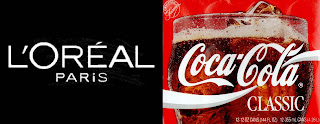
If you’ve bought The Star last week or so, there’s no way you could have missed the teaser “It’s about people. Not policies” sticker campaign that plastered on the top right of the front page. This went on continuously for about a week or more – fueling everyone’s curiosity. What could it be? On 16 November, Malaysians were introduced to eTiQa, a merger of 3 insurance companies, i.e., Mayban Fortis, Takaful Nasional, and MNI Insurance. My excitement very quickly lost out to my cynicism.
I read the entire 3 page ad filled with motherhood statements and no clear or specific USP. It said a lot of things that doesn’t mean anything. Read it, here’s the copy:
It’s about people. Not policies.
In an impersonal world of products, processes and policies, it’s easy to lose sight of the people they are meant for.
Etiqa is here to present the human face of insurance and takaful. At Etiqa, our business is not just about policies. It is to touch people’s lives by addressing their hopes, aspirations and dreams.
With products, services, policies, procedures, systems or even communications, our goal is to keep things simple, clear and relevant. Always with your best interests at heart. Of course we deal in policies, but we care more about the people they are for.
Building On A Rock Solid Foundation
Etiqa combines the expertise of three leading heavyweights. With proven success in takaful, bancassurance and conventional insurance, we have already earned our credentials. And now it’s time to take it to the next level.
Aiming To Improve Lives. Not Just Our Bottom-line
While we set high standards for ourselves in commercial achievements, it’s just as important for us to make a positive difference in the lives of our customers. We are innovating to transform insurance and takaful, and the key is connecting with people and caring about their needs.
Saying What We Mean
Life is complex enough as it is. We won’t complicate it further. We will keep it simple when it comes to language, procedures and paperwork. Which means you won’t have to read the fine print to know what you’re really getting.
Sharing Your Goals
To meet our goals we need to share yours. We will work hand-in-hand with you to achieve them. We make ourselves accessible to you, because true partners need to engage with each other. That’s our priority.
It’s promising, but I don’t know what they are promising. I went to their website to find out more and here’s what I got from their FAQ section First, please take a deep breathe:
Product Related Questions
With the new Branding, will policies be affected?
There will be no changes to existing policies. All terms and conditions remain unchanged.
Will there be changes to premiums?
There will be no change to premiums for all existing policies. All terms and conditions remain unchanged.
Will there be changes in the benefits?
There will be no change to benefits / entitlements for all existing policies. All terms and conditions remain unchanged.
What will happen to existing products?
Existing products will still remain with minor changes to the product name as this is necessary to reflect the new brand.
The real changes besides the new logo and fancy ad are (1) their promise to make claims easier, which by the way I have no way to ascertain if they are best in the market or otherwise; and (2) their promise to remove their IVR System and I quote, “Callers will be talking to our dedicated staff rather then a machine giving options of pressing 1 or 2 for help and directory listing”.
Well, I decided to check and call the phone numbers listed in the FAQ and here’s my report:
Claims Assist 1300 88 1007 (Direct to Staff)
Etiqa Oneline 1300 13 8888 (Direct to Staff)
Auto assist (Insurance and Takaful) 1800 88 6811 (Direct to Staff)
Agents Hotline 03- 2780 4688 (IVR SYSTEM)
Bancassurance Representative Hotline 03-2718 5555. (IVR SYSTEM)
The thing is this – Is it easier to have 1 number with IVR or having to remember a few different phone numbers to dial for different needs?
Fundamentally, the exercise is to announce a new brand name as a result of the coming together of 3 insurance companies. I think they’ve over spun it and unless they can do something that can really benefit customers as a result of the change, everything is just air. There are other insurers who did some re-branding (not just branding) exercise this year which basically put out some “this is out new” straight to the point kinda ads / communications – and you know what, it works for me because they didn’t promise or over promise anything to me.
This whole Etiqa campaign actually reminds me of the Guinness Adam King campaign. The “Who is Adam King?” teaser is definitely one of the best teaser campaigns ever, but unfortunately, when Adam was found, the whole thing just fell flat. Maybe it’s the high expectations set, maybe it’s just bad follow through. My point is teasers are really tricky things to do. Most of the time, it’s only exciting to the marketing folks within the company and not the consumer, who couldn’t really be bothered with it. Etiqa is a prime example of weak follow through as I really feel that even after the unveiling of the brand, they are still teasing me!
P/S. The Etiqa TVC is really good though – but it still doesn’t tell or sell you anything much (just like the press campaign, only with humour).



















































